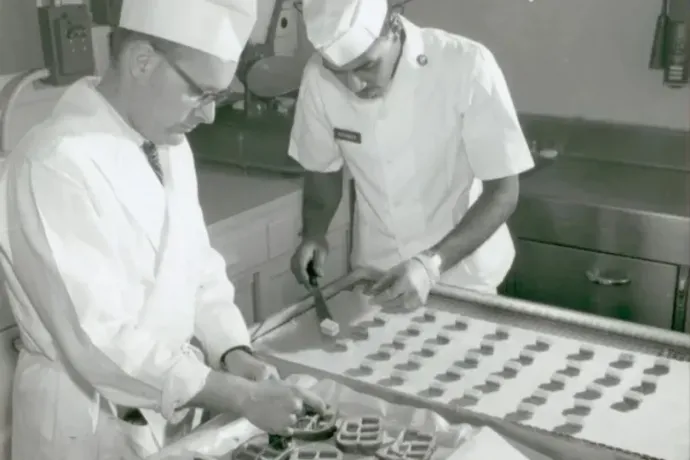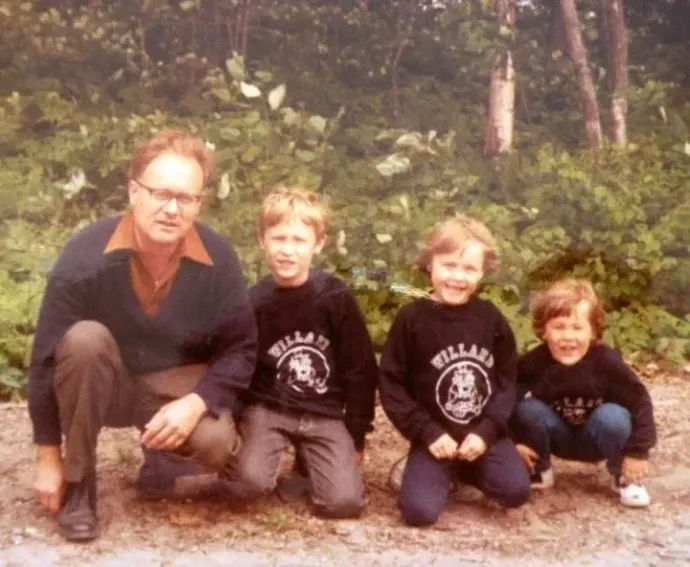The Hungarian who developed space food for the first American astronauts

In 1961, as the space race was heating up and NASA launched its Mercury programme, everything was ready for the first manned space flights. Two astronauts, Alan Shepard and Virgil Grissom had successfully made it to space that year, but these two missions were really just sub-orbital spaceflights, both lasting just over a quarter of an hour. Then in 1962, the next astronaut in the programme, John Glenn, set out with a more powerful rocket and stayed up there for nearly five hours. In preparation for the mission, NASA had a new problem to solve: five hours are long enough to get hungry, but what should an astronaut eat in microgravity? The solution came from a Hungarian, Lajos Jókay-Ihász.
Jókay-Ihász was born on 19 April 1924 in Budapest, but spent most of his childhood at his family's estate in Hathalompuszta, Veszprém County. The estate, founded by Jókay-Ihász's great-grandfather, Károly Jókay, the brother of the famous Hungarian writer Mór Jókai was the family's main source of income, so growing up, Lajos also pursued a career in agriculture. After graduating from the Reformed High School in Pápa, (Pápai Református Kollégium) he began studying agricultural engineering at the Hungarian Royal Agricultural College (Magyar Királyi Mezőgazdasági Főiskola) in Mosonmagyaróvár in 1942.
His studies were interrupted by the Second World War two years later. Lajos's younger brother Miklós was conscripted, and his father was hospitalised with a serious illness and died the following year. At 20, Lajos had to leave college to run the estate. He did everything he could to prevent the occupying Germans from destroying the farming equipment and taking the livestock, and saved about 30 farmhands from being taken into a forced labour camp. He later realised that he could not hope for much from the 'liberating' Soviets either: in 1945, when the Russians were only a few kilometres away, he decided to flee the country.
“At night you could see the fire of the cannons, the Bakony was burning, the villages were burning, there was fire everywhere.”
– he said later in a short film made by his granddaughter, recalling the day he had made the decision to leave. He set off on horseback, then travelled by carriage to Bavaria, where he met with several of his relatives and got a job in a UN refugee camp. He was granted permission to emigrate to the United States with his relatives in 1949 – his mother, who remained in Hungary, joined them in 1956. The family estate had by then been nationalized, and it was there that the Hathalmi State Farm was established in 1949, which later became one of the units of the Pápa State Farms.
Lajos Jókay-Ihász thus ended up finishing his studies in America, graduating from Michigan State University. His specialization was in dairy development, which landed him a job at the Armed Forces Food and Container Institute of the US Army in Chicago in 1956. He became a researcher and product developer, and was later part of the team that prepared the meals for the crew of the Mercury space shuttle. Jókay-Ihász was also responsible for the menu of the aforementioned John Glenn.
Among other things, the researcher experimented with lyophilisation (freeze-drying) and used this technology to produce food that quickly replenishes energy and is easy to eat in extreme conditions. One of his most successful "meals" was a block of powdered milk with malt, which Glenn also consumed, just like the astronauts of the Gemini programme later on. Astronauts are fed a different kind of food today, but some of Jókay-Ihász's inventions can still be found in the survival kits of the US military. The Hungarian food engineer published his work regularly and obtained several patents.
In the 1960's, Jókay-Ihász got a new job in a corn processing plant and was soon invited to join the G. D. Searle pharmaceutical company. He spent years there, contributing to the development of an artificial sweetener called aspartame with his research. Today, aspartame is one of the most widely used sugar substitutes, found in most diet drinks, for example. According to a statement from the WHO last year, while it may be carcinogenic in large quantities, it is safe in moderation.
Despite his sucess abroad, preserving his national identity was important to Jókay-Ihász. He became a central figure in the local Hungarian community and in several Hungarian organisations in Chicago. He organized a scout troop and did much to ensure that Hungarians immigrating to the Chicago area could preserve their culture. He married a Hungarian immigrant in 1958 and taught his three children Hungarian.

Although he could have visited Hungary earlier, he only came home after the fall of communism. He returned home in 1992, for the wedding of his son Károly in Budapest, and for his 50th high school reunion. He spent a month at home, visiting his family's former estate and the sites of his childhood as well. Unfortunately, he was unable to visit again: soon after the visit, he was diagnosed with cancer and died in Chicago on 1 February 1993. In accordance with his will, the family buried him in Hathalompuszta. Many of his children and grandchildren live in Hungary today. They set up a foundation in memory of their father and grandfather, with the goal of benefiting the students of Lajos Jókay-Ihász's former alma mater in Pápa.